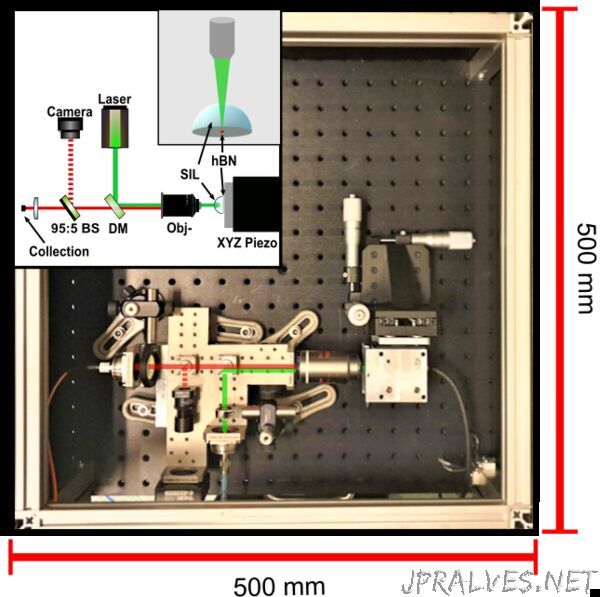
“Researchers have developed a new high-purity single-photon source that can operate at room temperature. The source is an important step toward practical applications of quantum technology, such as highly secure communication based on quantum key distribution (QKD).
“We developed an on-demand way to generate photons with high purity in a scalable and portable system that operates at room temperature,” said Helen Zeng, a member of the research team from the University of Technology Sydney in Australia. “Our single-photon source could advance the development of practical QKD systems and can be integrated into a variety of real-world quantum photonic applications.”
In the Optica Publishing Group journal Optics Letters, Zeng and colleagues from Australia’s University of New South Wales and Macquarie University describe their new single-photon source and show that it can produce over ten million single photons per second at room temperature. They also incorporated the single-photon source into a fully portable device that can perform QKD.
The new single-photon source uniquely combines a 2D material called hexagonal boron nitride with an optical component known as a hemispherical solid immersion lens, which increases the source’s efficiency by a factor of six.
Single photons at room temperature
QKD offers impenetrable encryption for data communication by using the quantum properties of light to generate secure random keys for encrypting and decrypting data. QKD systems require robust and bright sources that emit light as a string of single photons. However, most of today’s single-photon sources don’t perform well unless operated at cryogenic temperatures hundreds of degrees below zero, which limits their practicality.
Although hexagonal boron nitride has previously been used to create a single-photon source that operates at room temperature, until now researchers had not been able to achieve the efficiency needed for real-world application. “Most approaches used to improve hexagonal boron nitride single-photon sources rely on precisely positioning the emitter or using nano-fabrication,” said Zeng. “This makes the devices complex, difficult to scale and not easy to mass produce.”
Zeng and colleagues set out to create a better solution by using a solid immersion lens to focus the photons coming from the single-photon emitter, allowing more photons to be detected. These lenses are commercially available and easy to fabricate.
The researchers combined their new single-photon source with a custom-built portable confocal microscope that can measure the single photons at room temperature, creating a system that can perform QKD. The single-photon source and confocal microscope are housed inside a robust package that measures just 500 x 500 millimeters and weighs around 10 kilograms. The package is also engineered to deal with vibration and stray light.
“Our streamlined device is easier to use and much smaller than traditional optical table setups, which often take up entire labs,” said Zeng. “This allows the system to be used with a range of quantum computing schemes. It could also be adapted to work with existing telecommunications infrastructure.”
Demonstrating quantum cryptography
Tests of the new single-photon source showed that it could achieve a single-photon collection rate of 107 Hz while maintaining excellent purity – meaning each pulse had a low probability of containing more than one photon. It also showed exceptional stability over many hours of continuous operation. The researchers also demonstrated the system’s ability to perform QKD under realistic conditions, showing that secured QKD with 20 MHz repetition rates would be feasible over several kilometers.
Now that the researchers have established proof that their portable device can perform complex quantum cryptography, they plan to perform further testing of its robustness, stability, and efficiency during encryption. They also plan to use the new source to perform QKD in real-world conditions, rather than inside the lab. “We are now ready to transform these scientific advances in quantum 2D materials into technology ready products,” said Igor Aharonovich, who led the project.
Paper: H. X. J. Zeng, M. A. P. Nguyen, X. Ai, A. Bennet, A. Solntsev, A. Laucht, A. Al-Juboori, M. Toth, R. Mildren, R. Malaney, I. Aharonovich “Integrated Room Temperature Single Photon Source for Quantum Key Distribution,” Opt. Lett., 47, 7 (2022).
DOI: https://doi.org/10.1364/OL.454450”
